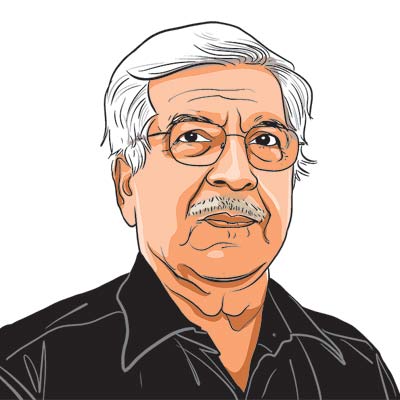Opinion No longer ship to mouth
Surprisingly,there was in the Indira Gandhi eulogies very little discussion on her food and agriculture policies apart from some acerbic non-factual diatribes.
Surprisingly,there was in the Indira Gandhi eulogies very little discussion on her food and agriculture policies apart from some acerbic non-factual diatribes. With the country unable to feed itself,she hated the humiliation of begging abroad for grain. It is true that the miracle seeds were imported in the mid-60s but were actually of limited spread initially; and by the early 70s,when the Indira period really begins,there was a universal of an Indian agricultural and grain crisis. Paddock and Paddock,in Famine 1975!,argued that India absorbed like a blotter 25 per cent of the entire American wheat crop. It would be beyond the US to keep famine out of India,they said,since of all the national leaderships the Indian one came close to being the most childish and inefficient,perversely determined to cut the countrys economic throat.
This unfairly negative assessment was from a larger canvas. Other think-tanks and experts the Hudson Institute,Keith
Griffin,Francine Frankel,the Bretton Woods institutions and at the IDS Sussex,Paul Streeten and Michael Lipton all had a dim view of agricultural prospects and some argued that India also did not have medium-term growth prospects since poor agriculture would lead to a wage goods constraint. The initial spurt of grain growth had petered out and the green revolution was seen as a misnomer. Indias grain production,after reaching 108 million tonnes in 1971,was ranging between 101 and 104 million tonnes in the early 70s. The World Bank and in fact even the Indian finance ministry said that India would not achieve the Planning Commission target of 125 million tonnes of grain by 1978-79 and their estimates ranged between 118 and 120 million tonnes. This was the challenge and the planners priorities were set and implemented at the level of Indira Gandhi who saw food security as a central issue.
At that time in my first job in the government,the Planning Commission produced its first Agricultural Sub-Model and this model made conservative assumptions on land reserves and productivity assumptions so that resource allocation for agriculture,particularly irrigation,got high priority in the investment budget. Interestingly,public sector capital formation of Rs 5566 crore at 1993-94 prices in 1976-77 was not reached in any year in the decade of the 90s,reflecting the lack of strategic policy-making for agriculture in the reform period. A lot of the investment then was to support the farmer to install irrigation pump sets,now advocated by people like Jeffrey Sachs for Sahelian Africa,where he has recommended the earlier Indian strategies. There was also priority to completing irrigation projects and the period saw the foundations of the conjunctive use practices as the new seeds spread and cropping intensities went up. While wholesale trade in grains was nationalised there was concern for giving the farmer adequate price incentives. By 1978-79 India was producing 127 million tonnes and was a net exporter of grains. Most serious commentators know that the significant revving up of the Indian agricultural growth rate above 3 per cent annually and of diversified agriculture go back to the foundations of that period. Given the importance of politics in food aid that was the decisive turning point.
With the neglect of agriculture from the 90s,the agricultural growth rate went down,employment growth in agriculture was low. Profitability of agriculture fell by 14.2 per cent in the 90s and,while earlier public capital formation was falling,even private investment stagnated. Irrigation and fertiliser growth slackened. It is to the credit of the UPA government that it decisively changed the trend of neglect of agriculture by raising investment in agriculture and since the last five years the growth rate in agriculture has picked up,less in crop production than the wider sector. Also some of the more basic problems of land scarcity,water use and incentives to the farmer remain.
The present generation does not really know the trauma a food-deficit poor country has to go through and many of the things we take for granted,and on which our growth is based,would simply not have been possible without the push given then. Removing hunger with adequate food supply is difficult. Without adequate food,hunger removal and in fact for a large country non-inflationary growth are impossible. I would suggest on Indira Gandhis birth anniversary that,if we have to think symbolically,we should recall her role in Indias lone march to food self-reliance,which laid the foundations of later prosperity.
The writer,a former Union minister,is chairman,Institute of Rural Management,Anand
express@expressindia.com


